
|
Proposed
Hand Signals for Wreck Diving
|
 |
|
DIR
Quest, Vol. 4 Nº 3 Summer 2003
|
|
By:
Maurício Carvalho
|
Brazilian
Wreck Divers Work Towards Improving Wreck Diving Communication |
 Anchor | 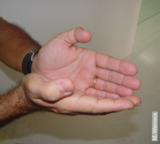 Boat |
|
|
|||
|
Diving within a team
is one of the best ways to avoid trouble underwater. Capable team members
serve to multiply perspectives, render aid, and augment the richness of
experience by making it a shared one. However, for team members to be
able to communicate effectively. Because underwater voice systems are
as yet unavaliable, the great majority of the divers prefer the hand signals. Wreck divers however, do not enjoy the benefits of a wreck specific standardized set of hand signals. If such a set were to be developed and uniformly employed by wreck divers, wreck diving could be made safer and more enjoyable. Such a system would enable team members to quickly and efficiently exchange information with respect to specific wreck areas (e. g. bow, stern, accomodations) and specific itens of interest (wheeel house, ship's bell, anchor); it woud also be especially useful during wreck exploration when a wreck is most unfamiliar. Also, bexause more often than not wrecks are degraded, camouflaged by marine life and/or the sea bottom, and difficult to identify, a standardized set of wreck diving hand signals would go a long way towards maximizing the efforts of a wreck diving team. Team safety would also be promoted by the development of a wreck-specific, standardized set of hand signals. For example, inside wrecks, compasses function badly, as they are influenced by the presence of metal. Thus, if a team chooses to penetrate, positioning and orientation wil be natural, and, in addition to the aid of a continuous guideline, will be based on identifying and communicating the location of a specific wreck area or piece of gear. |
|||
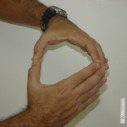 Boilers |
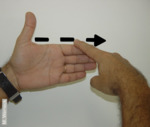 Deck |
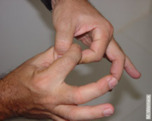 Chain |
|
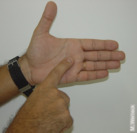 Hull |
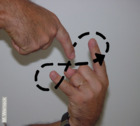 Cleat |
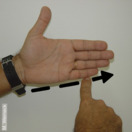 Kell |
|
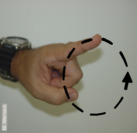 Screw propeller |
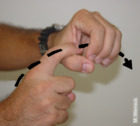 Winch |
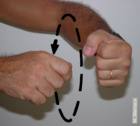 Wheel |
|
| SHIPWRECK HAND SIGNALS | |||
|
In Brazil, fifteen years ago, feeling the effects of this lack of standardization, we developed a set of hand signals (outlined below), designed represent specific wreck areas and wreck items, to help us communicate in the wreck environment. Because it was impractical to create hand signals for all areas of a wreck, we developed a restricted set of hand signals to represent what we considered to be most useful to wreck divers. In addition to hand signals learned during recreational diver training, wreck divers would benefit from using at least three other groups of hand signals. The first group of hand signals would represent the ship's gear as well as specific sections of the wreck, for example, bow, anchor, chain, crane, hull, kell, deck, mast, boilers, engines, davits, lifeboats, propellers, rudder, and stern. Already widely used by cave divers, the second group would represent equipment used during penetration and would concern spool and line use. Due to the complexity of a wreck interior and possibility that a line can be cut as a result of rubbing or resting against a metallic surface, it is critical that all team members know what is expected of them with respect to all aspect of line use during penetration. Hand signals would include signs for spool, tie-off, cut , and entangled. The last group of hand signals would concern aspects of wreck penetration that would involve team unity and potencial hazards; these would include signs for communicating the presence of dangerous passageways, limited visibility, entrapment, collapse, etc. Signs in this category would include ceiling, passage, room, stop, way to open water, restriction, stuck, and silt. |
|||
|
When using hand signals it is important to remenber the following:
We do not consider our work in this domain to be, in any way definitive, it only represents our efforts in trying to address what we believe is a glaring need in wreck diving. We hope some of you will find our work interesting, even useful, and will work towards the production of a standardized set of hand signals for wreck diving. |
|||
|
|
|||
|
|||